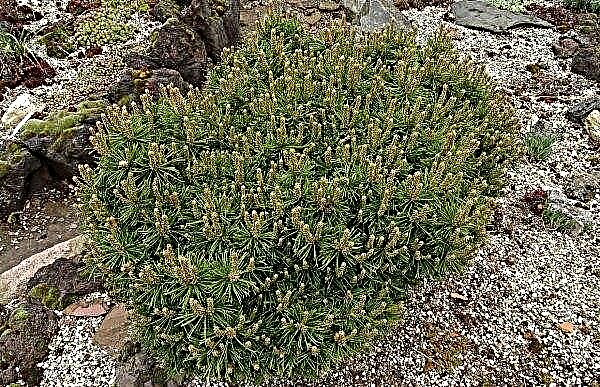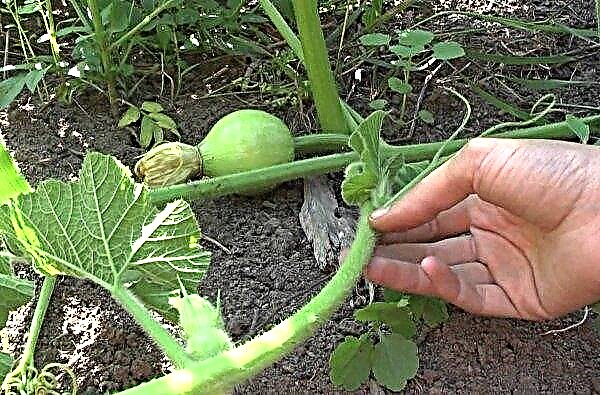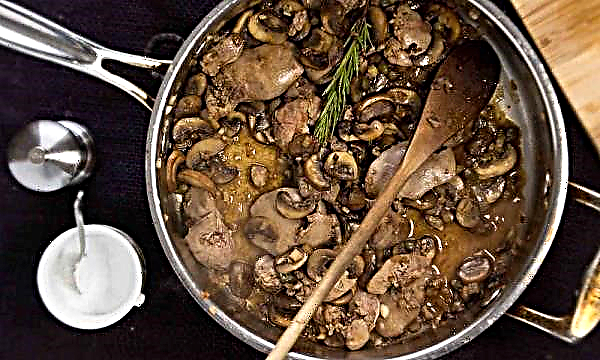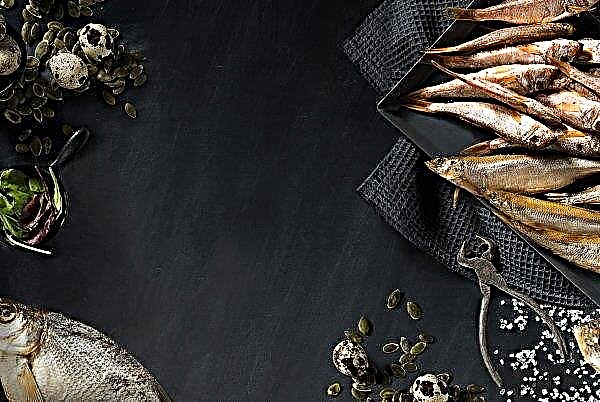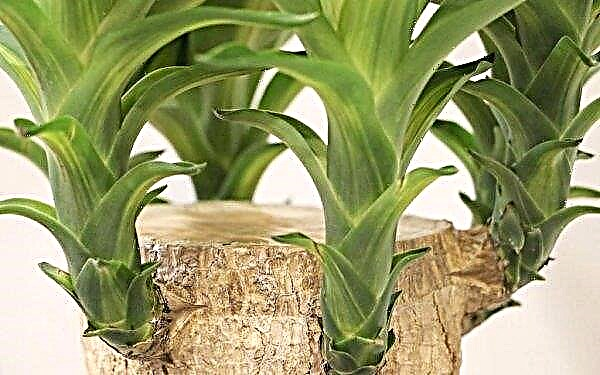Wallis spathiphyllum is a fairly common and easy-to-care indoor flower. Its snow-white, like wax, large flowers look excellent against the background of green foliage. The recommendations from our article will help you grow this variety of spathiphyllum in your own apartment without any extra problems.
Botanical description of Wallis spathiphyllum
Spathiphyllum is an evergreen shrub native to the tropics of South America and Malaysia. In common people is known by the name of "female happiness." The name "white sail" is also common, obtained due to the shape of inflorescences resembling sails.
Did you know? Young girls believe that spathiphyllum is guaranteed to attract personal happiness - it will help you find your “prince", as well as conceive and bear a healthy child. Hence the popular name "feminine happiness."
The following varieties and hybrid forms of the plant are considered the most popular:
- Little.

- Abundantly flowering.

- Brave.

- Mauna Loa.
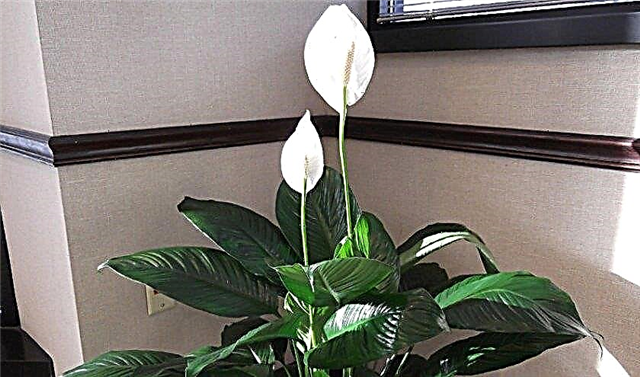
- Adagio.
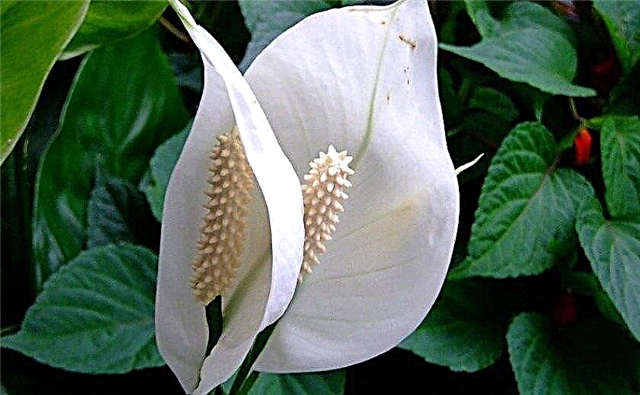
- Charming.

- Wallis.

- Feeling.
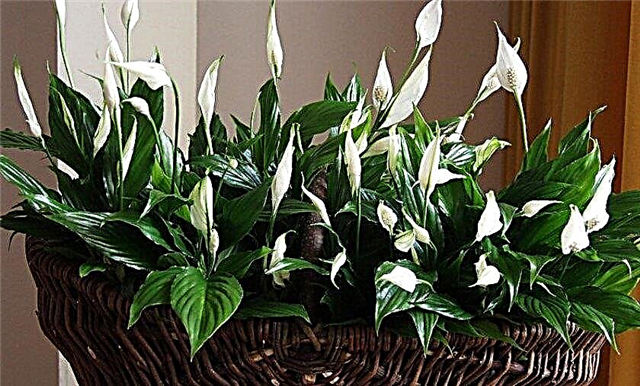
- Cannulate.
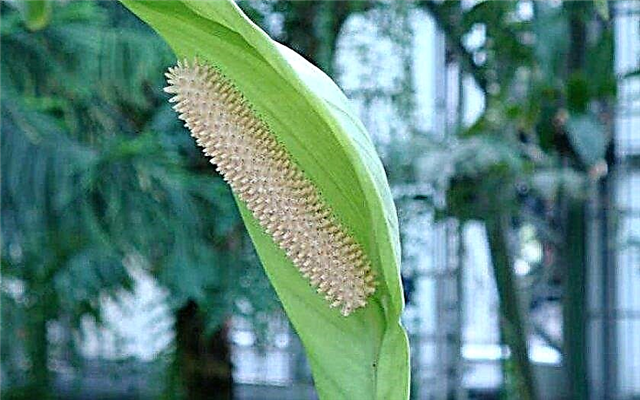
- Helikonelistny.

- Palace
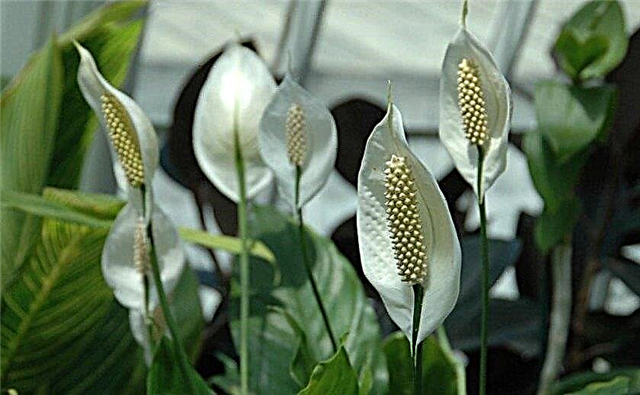
- Prelude.
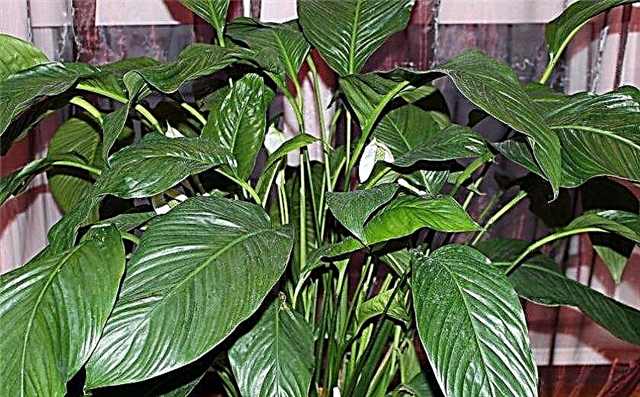
Spathiphyllum Wallis is a bushy plant of short stature (up to 50 cm). The root system is stemless, while the bush has rather large leaf blades - up to 30 cm in length. The leaves are neatly picked up in the basal rosette; they differ in ovoid shape and intense green color. The flowers are small, the spike inflorescence. The ear reaches a length of 7 cm and has a large white bract.
Perennial is widely used by florists in creating unrivaled floral arrangements. In addition, Wallis spathiphyllum is the best suited for decorating rooms, women's beauty salons, offices, offices, shop windows or cafes. The benefit of "female happiness" is the ability to perfectly moisten the air in the room, cleaning it from dust. The flower assimilates nitric oxide, formaldehydes.
It reduces the content of other harmful substances in the air, such as benzene and trichlorethylene. In addition, spathiphyllum is marked by phytoncide activity, it enriches the airspace with air ions. Due to lush growth, large specimens are used as solitaries in the decoration of educational institutions and office premises.
Care after purchase
After you bring Wallis spathiphyllum from the store home, the flower must undergo adaptation.
Adaptation
Spathiphyllum is quite unpretentious, easily adapts to a new habitat. If you provide the flower with optimal conditions, first of all, with the right substrate, it adapts immediately.
Important! The leaves of spathiphyllum contain poisonous juice - it can provoke local allergies and skin irritation, therefore, when working with this plant, hands should be protected.
Transfer
The first step after the purchase should be relocation to a new pot. Try to transship in the first few days, because without this procedure the flower will not be able to adapt: in the sold containers, the nutrient content of the soil is designed only for the period of sale. Relocate the plant as follows:
Relocate the plant as follows:
- Pick up a slightly larger pot than the previous one.
- Gently pull the plant along with an old lump of earth. To facilitate the procedure, you can thoroughly moisten the soil in an hour - then the rhizome will be easily removed from the tank.
- If you plan to get a large copy with a lush crown, separate all the processes. From remote instances, new plants can be grown.
- Add a 2-cm layer of drainage to the selected flowerpot (expanded clay with the addition of a small amount of pebbles).
- Pour 3-4 cm of soil with the second layer (universal substrate for flowering plants mixed with one tenth of sand or perlite).
- Install spathiphyllum in the center of the flowerpot.
- Cover the top with the soil mixture, tamping it lightly until the pot is full.
How to grow at home
Growing Wallis spathiphyllum indoors is quite simple. The main condition is a sufficiently high humidity.
Location selection
From the first day, the spathiphyllum must be placed in a suitable place for it. It should not stand near radiators or radiators that dry the air. Lighting should be diffuse. In hot summer days, it is better to transfer the flower to partial shade, that is, deep into the room. In the winter months there is little light, so it is advisable to put the pot on the windowsill.
Humidity and air temperature
The ideal temperature regime for the presented culture is +23 ... + 24 ° С. In winter, this indicator should be slightly lower - +16 ... + 17 ° С. Avoid large temperature differences and strong drafts.
Did you know? There is a belief that when there is no respect and love in a family, there are constant scandals and disagreements, then in such a house the spathiphyllum immediately dies.
To ensure that the plant always looks well-groomed and healthy, it is important to guarantee it medium or high humidity. A tray with expanded clay or pebbles flooded with water will help to retain moisture. Once a week, arrange a flower shower (water at room temperature), and it is advisable to spray spathiphyllum daily.
Soil requirements
Spathiphyllum Wallis prefers light, loose, water-retaining and nutrient-rich soil. Her reaction should be slightly acidic.
For independent preparation of the soil mixture, equal proportions of the following components are needed:
- peat;
- coarse sand;
- humus;
- sheet land.
Wallis Spathiphyllum Care
In order for the flower to please the owner with flowering and a healthy appearance, you must follow the rules for caring for it.
Watering
Spathiphyllum Wallis is a moisture-loving culture. It is very important that the flower does not lack water. The next watering is carried out at the moment when the top layer of soil begins to dry out. However, this culture is also not very good at overflow. In winter, watering is reduced to 1 time per week. The procedure is performed on top of a watering can with a long nose. Water quality also matters: use water that has stood still and warmed to room temperature.
Fertilizer
Fertilizing is important for both flowering and good growth. Use liquid universal complexes for flowering indoor plants. Fertilizers in granules are undesirable, since they dissolve for a long time and immediately give off all the nutrients. From March to mid-November, feed the crop twice a month. In winter, the plant rests, so it does not need additional fertilizing.
Pruning
Wallis home spathiphyllum does not need pruning, but may require removal of dry foliage and flowers.
Reproduction of Wallis spathiphyllum
Spathiphyllum can be propagated by the following methods:
- The seeds. After pollination of spathiphyllum, wait until the seeds ripen, then collect them and immediately sow them in moist soil mixture consisting of sand and peat. Cover the vessel with seedlings with a bag and transfer to a dark place with a temperature of +24 ... + 25 ° С. Moisturize the soil regularly to maintain moisture. Ventilate the mini-greenhouse daily for the entire waiting period.
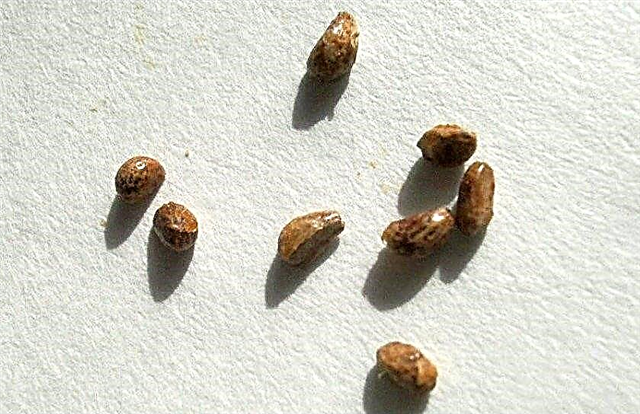
- Cuttings. Cut the rosette from the mother plant. Place the stem in water for 15–20 days, until the roots appear. To prevent decay of the lower part of the shoot, add half a tablet of activated carbon to 200 ml of water. Achieving roots 2-3 cm long suggests that the young shoot is ready for landing in the ground.

- Dividing the rhizome. This method is the simplest. When rhizomes are divided, you get ready-made plants that can only be planted in the soil. Perform the procedure at a temperature of + 20 ° C. Before you get the mother plant out of the flowerpot, thoroughly moisten the ground under it - the root system is saturated with moisture and will become less vulnerable to damage. Remove all dry and rotten roots, as well as sluggish leaves, from the divide. Plant a young bush in a container whose diameter is not more than 15 cm.
Important! The sowing method is considered difficult — It will take you a lot of time. The fact is that the seeds of the described culture quickly lose their germination.
Possible growing difficulties
Wallis spathiphyllum is quite resistant to various infections and fungi, as well as to attacks of harmful insects. Nevertheless, there is the possibility of damaging the plant with a spider mite, due to which the leaves are covered with rusty spots. To get rid of these parasites in the room where the plant is contained, it is necessary to restore the optimal moisture regime. You can also spray with Aktara or Aktellik insecticides. The attacks of a mealybug, which can gradually destroy a flower, are also frequent. To eliminate the insect, use special preparations - Calypso, Fitoverm, Biotlin, Confidor. Alcohol is an effective folk remedy: soak a cotton swab in it, then wipe the affected areas of the plant. Processing is carried out until then, until you can completely get rid of parasites. If the leaves curl into a straw, check to see if the aphids have settled on the foliage. If a parasite is detected, treatment with the appropriate drugs is required - Iskra, Tanrek. When blackening the tips of the leaves, reduce soil moisture to a minimum until the spathiphyllum is fully restored. All blackened foliage should be removed.
Alcohol is an effective folk remedy: soak a cotton swab in it, then wipe the affected areas of the plant. Processing is carried out until then, until you can completely get rid of parasites. If the leaves curl into a straw, check to see if the aphids have settled on the foliage. If a parasite is detected, treatment with the appropriate drugs is required - Iskra, Tanrek. When blackening the tips of the leaves, reduce soil moisture to a minimum until the spathiphyllum is fully restored. All blackened foliage should be removed.
Yellowing foliage may be more than one reason - it is either low humidity or a nutrient deficiency. In the latter case, you can not do without transshipment in a new pot with fertile soil. Perhaps there is a need for a short period to increase watering, as well as check for harmful insects. You can carry out preventive treatment with light anti-coccidic drugs. We hope that caring for Wallis Indoor Spathiphyllum will not be difficult for you. In return for your care, the flower will present all its beauty and useful properties.
















